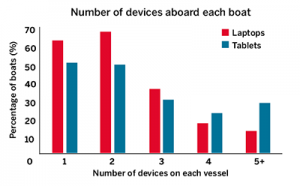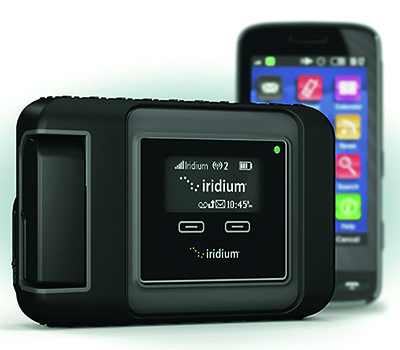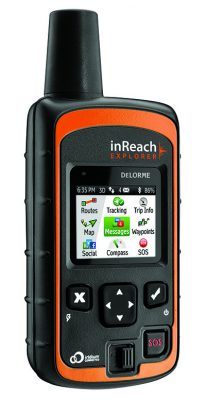Our annual survey of participants in the ARC and ARC+, a total of 259 skippers, concentrated on the vital issue of communications. Toby Hodges reports on the findings
In our ARC Gear Survey two years ago, data communications came out as the second highest recommended equipment carried by all the skippers (behind AIS). Surprisingly, despite the eye-watering cost of the hardware and airtime, it was the smaller yachts in the fleet that rated the various satcom devices particularly highly. A reliable means of contacting those ashore should never be underrated.



In fact, it is a safety requirement of the World Cruising Club (WCC) that all participants in the ARC Rally carry a means of data communication. At the start of the ARC and ARC+ in Las Palmas last November, we issued every yacht with a survey to fill in, and this time the questionnaire focused specifically on data communication.
We wanted to know what the 259 skippers (ARC plus ARC+) had chosen and why, how they set up their system, how well they rated their equipment, what the issues were and, crucially, how they would advise others looking to equip their yachts with long-distance comms.
Their answers and comments should help others make their decisions and to avoid mistakes.
Choices, choices
When it comes to providing a means of data communications, the options aren’t simple. Whether you feel that costly comms via satellites orbiting our planet, or seemingly outdated long-range radio is the route for you, there is still a minefield of options in hardware, software, email and weather providers to choose from.
You could perhaps go with the flow. From past surveys we can see the majority regularly chooses Iridium and Mailasail – the former because it is the only satellite provider with full global coverage and the latter because it is a dedicated marine brand providing email compression and weather forecasting services, plus a support service including set-up in Las Palmas.


The choice of the masses will never suit everyone, however, and you need to consider what will work best for you and your yacht’s set-up.
Satphone or SSB?
A quick overview would lead you to assume that a satphone is the easy answer – (relatively) affordable, low power draw and instantaneous. SSB on the other hand has a high installation cost and seems complicated to operate and calculate frequencies.
But old school techniques have staying power for a reason. This long-range medium of ship-to-ship communication can be invaluable, and the low-cost email connection that an added Pactor modem provides may be all some long-term cruisers really require.
During last year’s ARC, there were 267 satcom sets carried by the 259-strong fleet (190 Iridium, 71 Inmarsat, 6 other). That compares with 69 carriers of SSB.
That there were more satcom sets than yachts and that some favoured SSB instead of satcom, shows many carried a secondary form of data communication (58 yachts).
SATCOM — THE OPTIONS
Iridium, Inmarsat, Thuraya and Globalstar are the main players in the marine satcoms world, but the latter two don’t have Atlantic coverage – hence by far the most ARC sailors ship Iridium, followed by Inmarsat.
 When assessing the options, first decide how you want to use data. Choices vary from pay-as-you-go to basic monthly plans to large broadband plans that can lower the costs per megabyte. Inmarsat’s FleetBroadband, the first service that offered broadband/voice simultaneously at any time, offers guaranteed data rates on demand up to 256 kbps – and calls can be made at the same time as web browsing/internet use. Iridium’s version is called Pilot.
When assessing the options, first decide how you want to use data. Choices vary from pay-as-you-go to basic monthly plans to large broadband plans that can lower the costs per megabyte. Inmarsat’s FleetBroadband, the first service that offered broadband/voice simultaneously at any time, offers guaranteed data rates on demand up to 256 kbps – and calls can be made at the same time as web browsing/internet use. Iridium’s version is called Pilot.
Airtime costs are similar to mobile phone tariffs. Satcom phones are also SIM card-operated, with retailers offering pre or post-pay options. And again, like the mobile phone market, bundles are broken into minutes or amount of data plus line rental.
You also need to consider whether to purchase a specialist email or weather forecasting service, designed to minimise satellite airtime. By compressing emails and GRIB files for sending and receiving in one and blocking unwanted large files, you can potentially save a lot more on airtime than the cost of such a subscription service.
Defining your budget and how much data you need or want at sea will quickly narrow the decisions.
[Note: the Iridium network has 66 Low Earth Orbit satellites providing global coverage. Inmarsat meanwhile, founded specifically for providing maritime satcoms, has 12 satellites that cover all bar the extreme poles. Globalstar reaches most of the Northern Hemisphere, plus Australasia and South America, and Thuraya covers Europe, Asia and Australasia.]
SATCOM: typical usage and options
- Text based/emergency only = handheld satphone or tracker devices like Delorme InReach, Yellowbrick, SPOT.
- Single user, low email and weather forecast/small GRIB file use, voice calls = handheld satphone such as the Inmarsat Isatphone2 (£500 ex VAT) or the Iridium 9555 (£695 ex VAT).
- Multiple emails, calls and internet browsing, medium or large size GRIB files = Inmarsat Fleetbroadband 150 or Iridium Pilot (circa £3,500 ex VAT).
- Should have stayed in the office – full browsing and data downloading (multiple users, video calls, heavy internet use, etc) = Iridium Pilot, Fleetbroadband 250 or 500 (£5,000-£10,000) or larger VSAT systems.

SSB — the OPTIONS
SSB is a shortwave marine radio operating on medium to high frequency – the higher frequency you tune to, the further the range (up to around 4,000 miles before consistency becomes an issue). SSB allows unlimited users to listen to the same transmissions, which makes it ideal for weather forecasts and for creating a community on a rally such as the ARC.
 Pairing an SSB with a Pactor (a particular type of modem) allows text emails to be sent and received. The common email service for SSB is SailMail, a voluntary association with an annual fee (www.sailmail.com).
Pairing an SSB with a Pactor (a particular type of modem) allows text emails to be sent and received. The common email service for SSB is SailMail, a voluntary association with an annual fee (www.sailmail.com).
You can get a receiver from as little as £195 ex VAT from Nasa Marine, but the most popular manufacturer is Icom, which has an IC-M802 unit costing around £2,000.
Then you have to factor in the expense of a Pactor modem – £600 for a Pactor 3 or £800 for the faster Pactor 4.
Two new economic options for coastal sailing
Iridium GO!
This is a compact device that functions in a similar way to a MiFi hub for terrestrial mobile data, but with the addition of a facility for voice calls, SMS text messaging and an SOS facility. It provides the option of buying unlimited data for just US$125 per month, the only Iridium device with this offer.

It is priced at two hours’ worth of data connection at typical pay-as-you-go rates – although speed is capped at the industry standard of 2.4kbps.
GO! has an SOS button that will send your position, plus an emergency message, to a user-defined group of contacts. An external antenna is also advised at £650 ex VAT. See here.
Delorme inReach Explorer
 This is another compact option for those who want to stay in touch cheaply anywhere in the world with text, tracker or SOS functionality. It can send and receive text messages via the Iridium network.
This is another compact option for those who want to stay in touch cheaply anywhere in the world with text, tracker or SOS functionality. It can send and receive text messages via the Iridium network.
The tracking is accurate to around 50m and can be accessed via a website that allows selected contacts to look at a map or satellite view.
Priced around £270, monthly airtime fees start at $21 ex VAT with 115 inclusive messages from www.inreachdelorme.com or www.globaltelesat.co.uk





